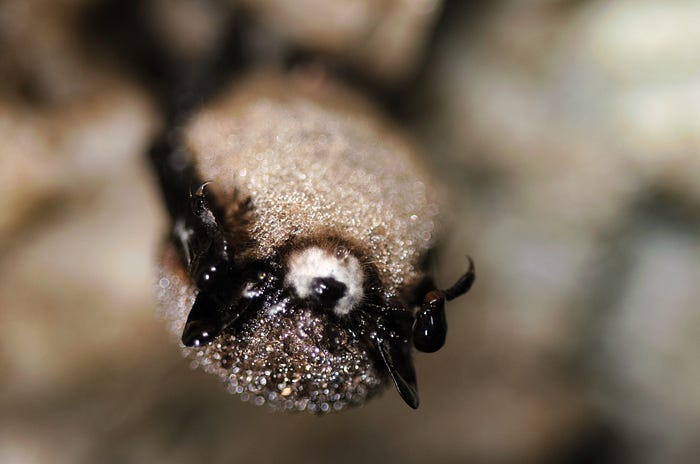Member-only story
If Bats Perish, Where Does That Leave Us?
Scientists scramble as a fatal fungus finally reaches a major bat sanctuary

 Everyone is worried about the bats. There are so many species with so many characteristics, and yet one disease is killing so many of them. It’s called white-nose syndrome, so named because it leads to the appearance of a white fungus — Pseudogymnoascus destructans (PD) — around a bat’s little nostrils. North American bats are dying in droves — so many, in fact, that scientists don’t have an exact number. In 2012, an estimated 6.7 million bats had died from white-nose syndrome. It’s undoubtedly much worse than that now.
Everyone is worried about the bats. There are so many species with so many characteristics, and yet one disease is killing so many of them. It’s called white-nose syndrome, so named because it leads to the appearance of a white fungus — Pseudogymnoascus destructans (PD) — around a bat’s little nostrils. North American bats are dying in droves — so many, in fact, that scientists don’t have an exact number. In 2012, an estimated 6.7 million bats had died from white-nose syndrome. It’s undoubtedly much worse than that now.
Across the country, scientists decontaminate their gear in an attempt to keep it from spreading. In the winter, when the bats hibernate, these researchers sneak into their caves and stretch long, sterilized swabs — highly technical Q-tips — up toward their soft bodies. Gently, they rub the swabs on the bats’ faces and wings as the animals sleep. Then, the scientists take the swabs back to the lab for a genetic analysis, and if they’re religious, they pray.
They’ve carried out this grim ritual in Texas since 2012. For a few years, as the disease spread from New York down the Eastern Seaboard and eventually westward, the Texas bats were safe. But in 2017, a test finally came back positive in the Texas panhandle. Since then, the fungus everyone fears has jumped around. What was six infected counties in 2017 became 10 in 2018. The number now sits at 21.
Nonprofit Bat Conservation International now reports that early signs of the fungus have been detected at Bracken Cave near San Antonio, the largest bat colony in the world and home to some 20 million Mexican free-tailed bats.

“It is one of the most major conservation crises in North America,” says Winifred Frick, the chief scientist for Bat Conservation International. “I usually just emphasize ‘millions,’ as that is about the level of precision we have and is impressive even if imprecise,” Frick says. Scientists have not released a new estimate of American bats lost since 2012.

